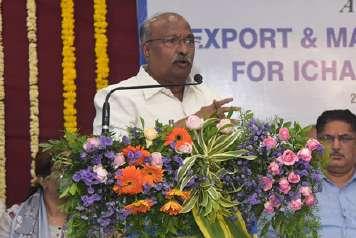COVER STORY
21
SUSTAINABLE FABRICS TO TRANSFORM THE FASHION INDUSTRY FOR GOOD Textile Value Chain Editorial Team While the fashion industry is flourishing, more attention is being drawn to the industry’s extensive list of adverse environmental effects. People are attempting to make textiles and fashion more sustainable and environmentfriendly since they grow more conscious of the significance of conserving the planet for future generations. Shopping for sustainably created garments is one approach to assure a more thoughtful purchase in the world of conscious fashion. Because fast fashion is produced at such a rapid speed to satisfy demand, producers must rely on virgin synthetic materials, which are both inexpensive and quick to make. But it is not only time to slow-down but also to pay attention to our clothing labels. Now-a-days, several biodegradable materials are being used to transform the global fashion industry. These ecofriendly materials and textiles are created with cutting-edge technology that eliminates the necessity of pesticides in the clothing industry, also lowering total wastage of water, eliminating toxic dyes and processing chemicals, and upcycling previously discarded fabrics. To understand more about sustainable fabrics let’s look at the definition of ‘Sustainable Fabric’. What is Sustainable Fabric? Sustainable fabrics refers to the fabrics that are created from natural or recycled resources, such as sustainably cultivated fibre crops or recycled materials, with the goal of minimising damage caused by the manufacturing process, fibre qualities, or ultimate effect on the environment. Such fabrics can also help with waste minimization,
conservation of water, carbon reduction, and soil restoration, as previously stated, no fabric is completely sustainable. Key Points • Shopping for sustainably created garments is one approach to assure a more thoughtful purchase in the world of conscious fashion
fabric that does not cause irritation to the skin and has a wide range of applications. It’s frequently substituted for cotton and regarded as a carbon-negative raw material. Since this fabric has a lot of benefits such as being naturally UV resistant and antimicrobial, it is usually more expensive and less accessible to everyone.
• Hemp produces a long-lasting fabric that does not cause irritation to the skin and has a wide range of applications. • Organic cotton production utilises 62 percent less energy and 88 percent less water than traditional cotton farming. • Lenzing, the firm that invented TENCEL™, uses eucalyptus wood, which grows without the use of hazardous chemicals or insecticides. With limited resources and fibres such as acrylic, polyester, spandex and nylon having adverse effect on the nature, it is high time for the fashion industry to take a glance at the sustainable solutions and prove that textile and apparel manufacturing is not going to harm the environment from now on. Even though there are numerous ecologically sustainable materials which are revolutionising the fashion industry, the following are some of the most widely used fabrics in sustainable fashion.
Organic Cotton Cotton farming uses a lot of harsh pesticides, chemicals and significant amount water only to make one cleaning item. There are nevertheless, more environmentally friendly methods of creating the fabric that consider the larger ecology and natural habitats. Organic cotton is one of such environmentally sustainable fabrics available. Organic cotton production utilises 62 percent less energy and 88 percent less water than traditional cotton farming. Organic cotton is grown without using hazardous pesticides, synthetic fertilis-
Hemp Hemp is a type of cannabis plant that is used for a variety of purposes. It grows quickly, doesn’t degrade the soil, uses a lot less water, and doesn’t need pesticides. Hemp produces a long-lasting
OCTOBER 2021



















